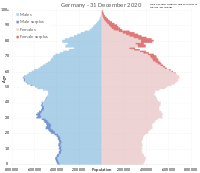
Photo from wikipedia
Ethnicity is a well-established determinant of pediatric maturity, but the underlying genetic and environmental contributions to these ethnic differences are poorly comprehended. We aimed to evaluate the influence of ethnicity… Click to show full abstract
Ethnicity is a well-established determinant of pediatric maturity, but the underlying genetic and environmental contributions to these ethnic differences are poorly comprehended. We aimed to evaluate the influence of ethnicity on skeletal age (SA), an assessment of pediatric maturation widely used in clinical settings. We included children from the Generation R Study, a multiethnic population-based pregnancy cohort, assessed at a mean age of 9.78 (±0.33) years. SA was evaluated by a trained observer on hand DXA scans using the Greulich and Pyle method. Ethnic background was defined as geographic ancestry (questionnaire-based assessment) (N = 5325) and genetic ancestry (based on admixture analysis) (N = 3413). Associations between the ethnic background and SA were investigated separately in boys and girls, using linear regression models adjusted for age, height and BMI. Based on geographic ancestry, 84% of the children were classified as European, 6% as Asian and 10% as African. Children of European background had on average younger SA than those of Asian or African descent. Asian boys had 0.46 (95% CI 0.26-0.66, p-value < 0.0001) and African boys 0.36 years (95% CI 0.20-0.53, p-value < 0.0001) older SA as compared to European boys. Similarly, Asian girls showed 0.64 (95% CI 0.51-0.77, p-value < 0.0001) and African girls 0.38 years (95% CI 0.27-0.48, p-value < 0.0001) older SA as compared to European girls. A similar pattern was observed in the analysis with genetically-defined ancestry. Furthermore, an increase in the proportion of Asian or African component was associated with older SA in both boys (log[Non-European/European]proportion = 0.10, 95% CI 0.06-0.13, p-value < 0.0001) and girls (log[Non-European/European]proportion = 0.06, 95% CI 0.04-0.08, p-value < 0.0001). In summary, children of Asian and African backgrounds have on average older SA as compared to children of European descent, partially explained by a genetic component.
Journal Title: Bone
Year Published: 2019
Link to full text (if available)
Share on Social Media: Sign Up to like & get
recommendations!